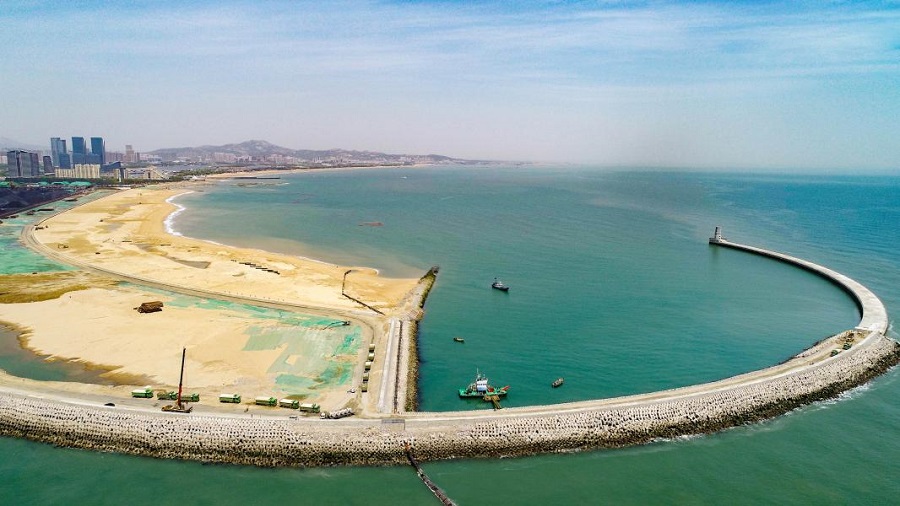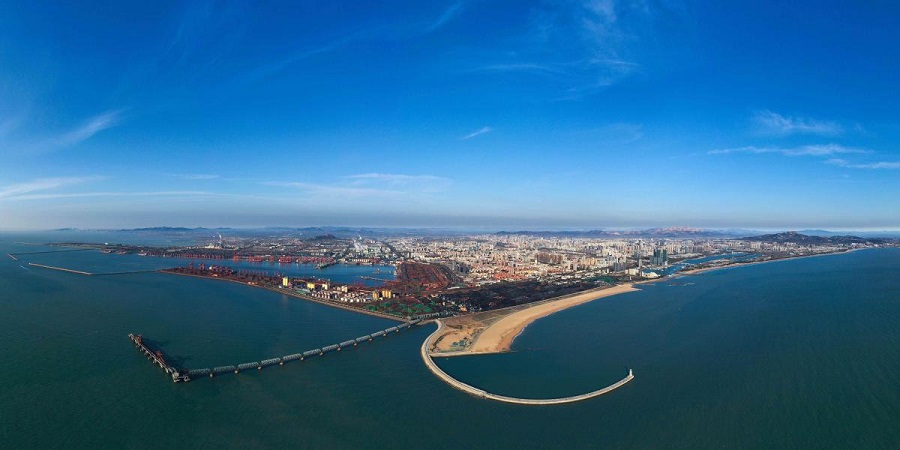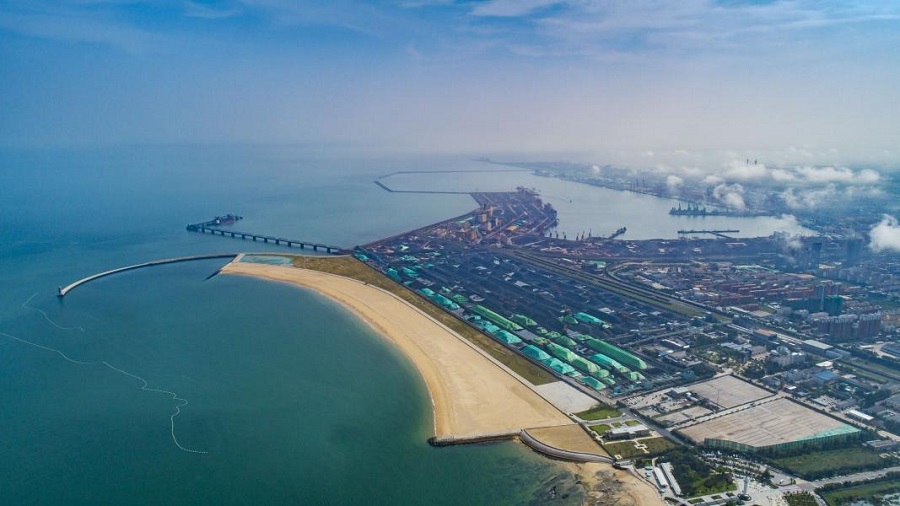China's natural shoreline projects bear fruits
-- The natural shoreline project of Rizhao Port, with a total investment of 15 billion yuan (around 2.3 billion U.S. dollars), was recognized as China's first industrial port restoration and reconstruction project.
-- The project vacated more than 133 hectares of industrial land at the port, including moving two major coal-handling zones, each capable of handling 100,000 tonnes of coal, to the south.
-- A sand beach with a length of about 2 km and an area of 460,000 square meters, as well as several facilities such as museums and exhibition halls, were built to better integrate the area with the city's coastal landscape.
-- Since 2016, China has implemented a series of projects for marine ecological protection and restoration, involving 1,200 km of coastlines and 23,000 hectares of coastal wetlands.
by Xinhua writers Xu Ruiqing, Zhang Wuyue, Wang Kai, Wu Shuguang
JINAN -- For more than a decade, Hu Xiaowen barely opened the windows of her apartment near the coal-handling areas of Rizhao Port in east China's Shandong province.
"After opening the windows for a while, the floor would be covered with coal soot," recalled Hu, adding that "even if I didn't open the windows, there would still be layers of coal soot indoors in a few days."

Aerial photo taken on May 6, 2019 shows part of the vacated area at Rizhao Port, east China's Shandong Province. [Rizhao Port/Handout via Xinhua]
Rizhao City has a coastline of 168.5 km. A natural deepwater port for coal export, Rizhao Port was opened in 1986. Currently, it has grown to be a comprehensive world-class port with two major port areas and an annual cargo throughput of over 400 million tonnes.
However, as the city's urban areas have expanded in the past 30 years, the coal handled by the port has had a serious impact on the ecological environment and lives of nearby residents.
In addition, the bustling areas in the north of the port where coal is processed are close to a renowned coastal scenic spot, which disrupted the tranquil coastal landscape.
In order to resolve the conflict between the development of the port and the city and improve the ecological environment, in 2015, Rizhao City decided to launch a port renovation and reconstruction project.

Aerial photo taken on Nov. 8, 2019 shows part of the vacated area at Rizhao Port, east China's Shandong Province. [Rizhao Port/Handout via Xinhua]
In June 2016, the project, with a total investment of 15 billion yuan (around 2.3 billion U.S. dollars), was approved by the national financial and marine authorities, and was recognized as China's first industrial port restoration and reconstruction project.
Nationwide, since 2016, China has implemented a series of projects for marine ecological protection and restoration, involving 1,200 km of coastlines and 23,000 hectares of coastal wetlands.
According to the project, the Shijiu Port Area of Rizhao Port planned to move its two major coal-handling zones, each capable of handling 100,000 tonnes of coal, to the south, over 10 km away from the city's urban areas. In total, the project vacated more than 133 hectares of industrial land at the port.
Meanwhile, the local government planned to restore the ecological environment of the vacated shorelines, where a beach with a length of about 2 km and an area of 460,000 square meters, as well as several facilities such as museums and exhibition halls, were built to better integrate the area with the city's coastal landscape.
However, building an artificial beach on the vacated land was no easy task. According to Tang Shisheng, deputy director of the Rizhao Municipal Commission of Development and Reform, the coastline of Rizhao Port is fairly straight, making it easy for the sand used for the artificial beach to be washed away.

Aerial photo taken on Aug. 23, 2020 shows part of the vacated area at Rizhao Port, east China's Shandong Province. [Rizhao Port/Handout via Xinhua]
To solve the problem, Rizhao invited experts from Chinese and overseas universities and institutes and devised a plan to build a curved shoreline along the vacated area and form a bay, creating a stable environment for the formation of a beach, which required 4.5 million cubic meters of sand.
After more than two years of construction, the main part of the shoreline restoration and reconstruction project was completed in July 2019. The relocation and upgrading of the coal-handling areas of the port are proceeding according to schedule.
Hu, an employee of Harbour Engineering, which is participating in the construction of the project, said now that the new beach is almost completed her favorite thing to do each day is taking a stroll on the waterfront.
"I have seen white dolphins and turtles in the sea," said Hu. "The environment has improved a lot. I'm no longer afraid to open the windows of my apartment."
Video reporters: Zhang Wuyue, Wang Kai, Wu Shuguang; Video editor: Zhu Cong
























